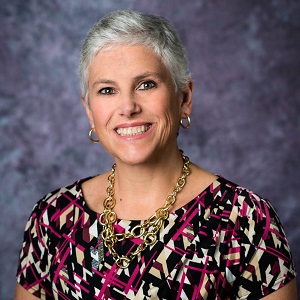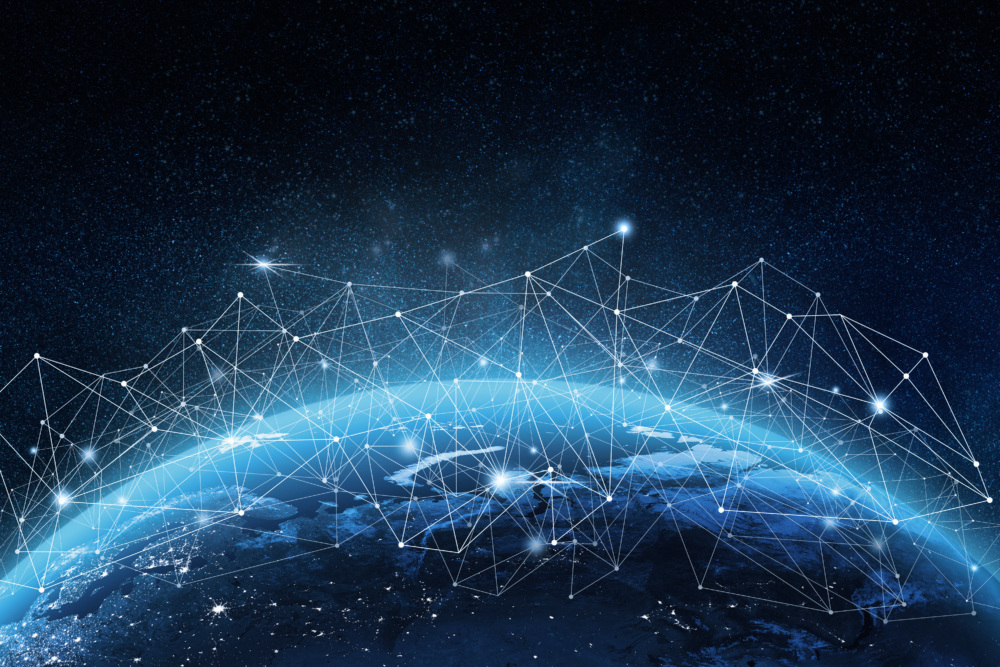
Remarks to Amman Nuclear Forum
Thank you, Ayman.
It is wonderful to be here for the second annual meeting of the Nuclear Forum. Ayman and his team – including Elham, Sarah and Jamal – have worked so hard to build the Forum and to make this event possible. I know we are all grateful to be here, and we are inspired by the speakers and energized by the dialogue. This event is a terrific showcase for the Forum’s work.
Speaking of the Forum’s work, it’s hard to believe that the Nuclear Forum is little more than a year old. As you all know, it was launched by the Arab Institute for Security Studies in 2014 – and since that time, the Forum has made substantial contributions to the global dialogue on nuclear security issues, including through its valuable contributions around the NPT Review Conference.
We at the Nuclear Threat Initiative strongly believe in the importance of capacity building and promoting dialogue in all regions of the world on nuclear threats and the steps necessary to reduce those threats. This dialogue should be encouraged across a broad range of stakeholders representing different sectors and different generations.
The Forum has done just that – and in fact, has quickly become just what NTI hoped it would be: a regional hub for resources on nuclear issues and the leading platform in the Arab world for promoting dialogue among policymakers, scholars and researchers. You have attracted some of the most influential and renowned researchers – as well as some provocative thinkers – and you have reason to be proud. We certainly are proud to support you in this endeavor.
In a few moments, I’ll be moderating a panel discussion on the challenges facing the non-proliferation regime, and I think we all know there are many. The agreement reached over Iran’s nuclear program marks progress, but the fact is that over the long term, there will be more countries like Iran and North Korea and more crises brought on by the proliferation of nuclear technology and materials.
So the unfortunate outcome of last year’s NPT Review Conference exacerbates the challenges around proliferation, and I think it’s clear to all of us that this also is a very challenging time for the broad risk-reduction agenda, whether we’re talking about proliferation, disarmament or global nuclear materials security.
The fundamental challenge we face on all these issues and indeed the greatest obstacle to global security, I believe, is the breakdown of cooperation and the corrosive lack of trust that undermines efforts at cooperation between and among nations. This is evident in the Euro-Atlantic region, between the United States and Russia, in South Asia, and of course in the Middle East. Here, efforts to work on peace and stability continue, but we all understand that’s serious issues remain.
That’s why platforms like the Nuclear Forum are so important. They inspire is to keep working for the day when progress is possible – and they prepare us to take advantage of opportunities to make progress when they arise.
NTI’s work
We believe our work at the Nuclear Threat Initiative also plays that role – and even goes beyond it to catalyze cooperation and progress through innovative projects on issues ranging from nuclear materials minimization to fuel cycle security.
Last year at this Forum, I shared details of our work to help develop an international fuel bank that offers countries interested in peaceful nuclear energy a guaranteed source of fuel so that they don’t need to develop their own enrichment facilities that could later be used to make weapons. In August, the government of Kazakhstan signed an agreement to host the new fuel bank – and while it will still take time for the bank to come on line, we are delighted to have reached this important milestone.
I also described our work on nuclear materials security, which has been extensive over the past several years. In January, we will release the third edition of our NTI Nuclear Security Index, a unique public assessment of nuclear materials security across nearly 200 countries. The data-driven Index—which assesses vulnerability to theft, sabotage and cyber attacks—has helped guide world leaders as they work to secure and minimize quantities of nuclear materials and develop a common set of standards for security. We are now finalizing the 2016 edition of the Index and expect it to play a significant role in shaping outcomes at the final Nuclear Security Summit in Washington in March. We hope you will find it to be a valuable resource as well.
Today, I’d like to describe several of our other projects in more detail.
Verification
Earlier this year, NTI partnered with the U.S. Department of State to convene officials from more than 25 countries to work on a technical challenge that’s particularly relevant in light of the Iran agreement – building international capacity to tackle the difficult monitoring and verification challenges that will need to be addressed for future arms control and verification agreements.
The effort – called the International Partnership for Nuclear Disarmament Verification – is an outgrowth of NTI’s groundbreaking work on verification over the past two years. As some of you may know, in 2014 we released the results of our Verification Pilot Project. Our multi-faceted report included the key recommendation that states come together to assess verification gaps, develop collaborative technical work streams, and contribute to overall global nuclear threat reduction. In today’s world, we simply can’t continue to have just a few countries – in particular, the United States and Russia – with the deep experience needed for nuclear disarmament verification.
So we were pleased at the end of last year when the State department announced it would lead such an effort, in cooperation with NTI. We have briefed on the effort at the United Nations; we have working groups established on monitoring and verification challenges, on on-site inspections and on technical challenges and solutions; and the second plenary meeting of the participating states will be held next week (Nov. 16-18) in Oslo. At that meeting, participants will have the opportunity to visit a facility to see first-hand the kinds of steps and procedures involved in the dismantlement of a nuclear weapon.
Looking ahead, we expect 2016 to also be a busy year for the Partnership – and we are excited because not only is robust verification needed after agreements are reached, we believe that if states have confidence in existing procedures and methods, robust verification can help catalyze new arms-reduction agreements.
Radiological
Another project that addresses an area of deep concern for all of us at NTI involves radiological security. As I’m sure everyone here knows, terrorist organizations are seeking — and may already have – the radiological material needed to build a dirty bomb – what we call a weapon of mass disruption.
This is a new area for NTI and we are progressing rapidly with the first step in our new project being to draw attention to the risk posed by potentially vulnerable radiological sources. These sources include blood irradiators used at hospitals and equipment used in the oil and gas industry that contain the radiological material Cesium-137. That’s the key material that can be used to build a radiological dirty bomb – and many of the facilities that have machines containing Cesium are unaware of the risk, including their own liability risks. They are also unaware that there are safer alternative technologies available.
So we have launched a project, starting in the United States, to promote a policy shift to phase out use of Cesium-137. We plan to demonstrate the feasibility of replacing these sources with an equivalent x-ray based technology that, in the U.S., has been approved for use by the government. We convened a roundtable last month in New York to raise awareness of the liability risks and lack of legal coverage if radioactive materials were stolen for malicious purposes. We brought together experts from the insurance industry, hospitals, professional associations, city health officials and technical and insurance experts in WMD terrorism. We also have published an op-ed in The Washington Post highlighting the risk.
Just like our NTI Nuclear Security Index, which assesses the security of nuclear materials around the world, the radiological project has direct ties to next year’s Nuclear Security Summit. We are now assessing the progress countries have made in securing these dangerous sources, and we will be issuing a “radiological scorecard” before the March 2016 summit.
Cyber
NTI is also in the early stages of developing a program to raise awareness of the threats posed by cyber hackers. This is a growing concern for governments and industry across a host of key sectors – including nuclear – and it’s deeply concerning to us at NTI.
What if a hacker got into the control systems of a nuclear reactor and caused a release of radiation on the scale of Fukushima? Or – worse – just imagine if a sophisticated cyber attacker was able to compromise U.S. or Russian nuclear weapon command and control systems, potentially triggering a false warning of a missile launch – or even actually launching a loaded nuclear missile.
Unfortunately, this possibility is not just something that might happen in a video game or sci-fi film. General James Cartwright, the former top military officer in the United States and head of U.S. Strategic Command, has said – and I quote – “The sophistication of the cyber threat has increased exponentially (over the past decade). It is reasonable to believe that the threat has extended itself into nuclear command and control systems.”
So this is obviously an urgent issue and we are moving ahead rapidly on a few fronts:
- We’re working with experts from nuclear power operators, the cyber community, regulators and technology developers, to develop principles or “rules of the road” for protecting nuclear power facilities from cyber threats.
- We’re convening influential policy and military advisors to determine what must be done to address potential vulnerabilities in nuclear command and control systems.
- And we are exploring the creation of a global incident-response team to provide rapid technical and operational assistance to any civilian site that has experienced a significant cyber breach.
In all these areas and more, leadership and international cooperation is key. At NTI, virtually all our work is undertaken with – and relies on — international support and expertise. This Nuclear Forum and the work everyone here today is doing to raise awareness and address nuclear dangers underscores the importance of broad participation in international security work – with governments and non-governmental organizations.
We look forward to sharing ideas and collaborating with you, and we applaud you for all you have done so far to make the Forum a robust resource in the region.
I look forward to our discussions today, and let me say again how pleased I am to be here with you in Amman.
Thank you.
Stay Informed
Sign up for our newsletter to get the latest on nuclear and biological threats.

Global Effects of Nuclear Conflict: Implications for Nuclear Policymaking, Then and Now
This paper highlights the need for renewed attention to the catastrophic effects of nuclear conflict as a crucial step toward reducing the risk of nuclear use.

Reducing Cyber Risks to Nuclear Weapons: Proposals from a U.S.-Russia Expert Dialogue
There is a critical need for a global diplomatic approach to address growing cyber risks, including, where possible, through cooperation between the United States and Russia.

Statement by the EASLG: Shrinking the Zone of Confrontation and Competition: Principles for Euro-Atlantic Security and the Global Nuclear Order
The co-conveners and participants of the Euro-Atlantic Security Leadership Group call for the re-establishment of basic principles relating to security and nuclear order.
